01.
The first concept
The concept of this cash register started as a proposition for the first Olivetti Design Contest where the historical brand Olivetti asked for a redesign of their low-end and most sold cash register.
Together with a team of other four design students, we designed a cash register focusing on usability and customer experience combined in curved and organic shapes.
The concept won the first price.
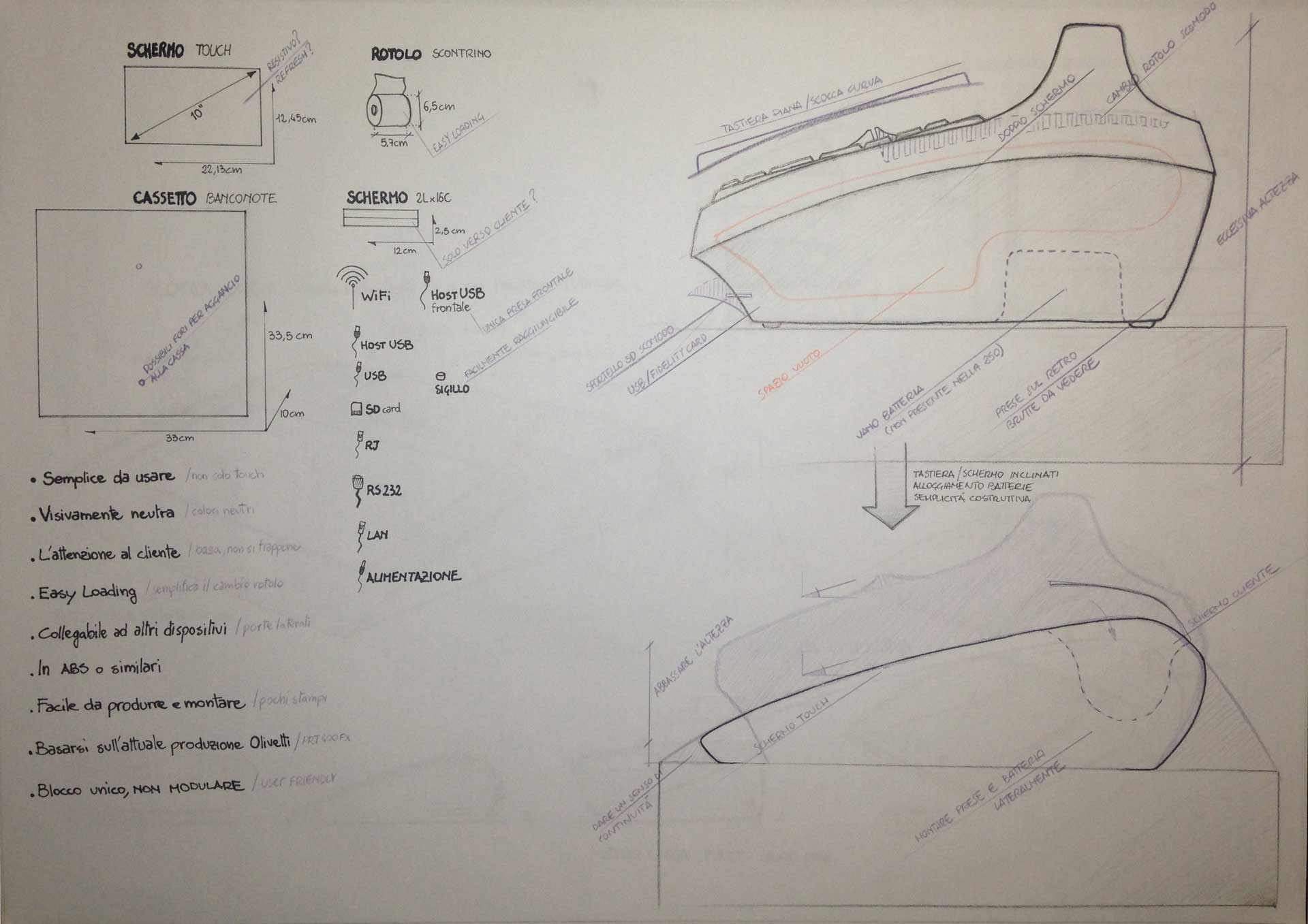
Olivetti Design Contest – Studies
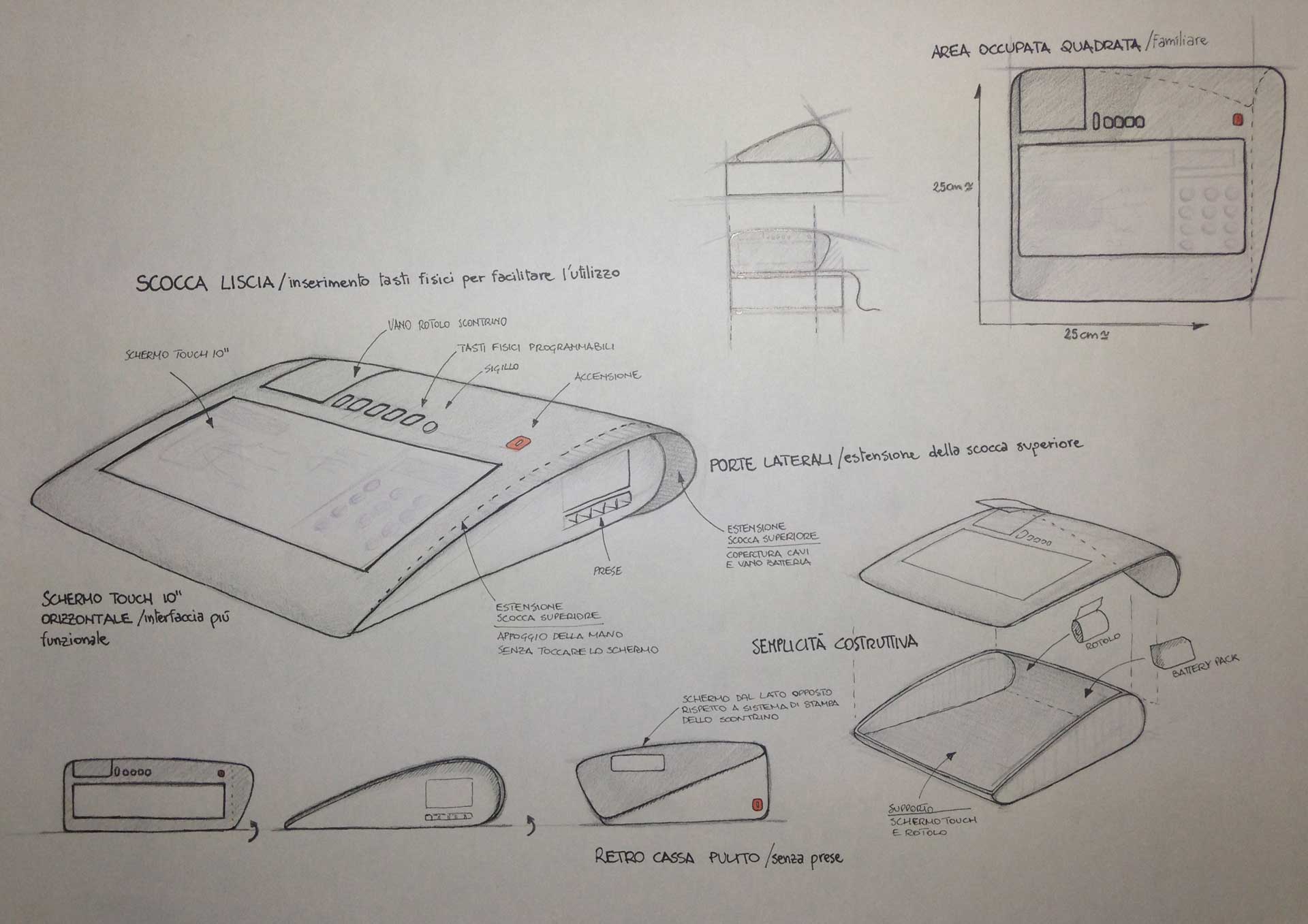
Olivetti Design Contest – Studies
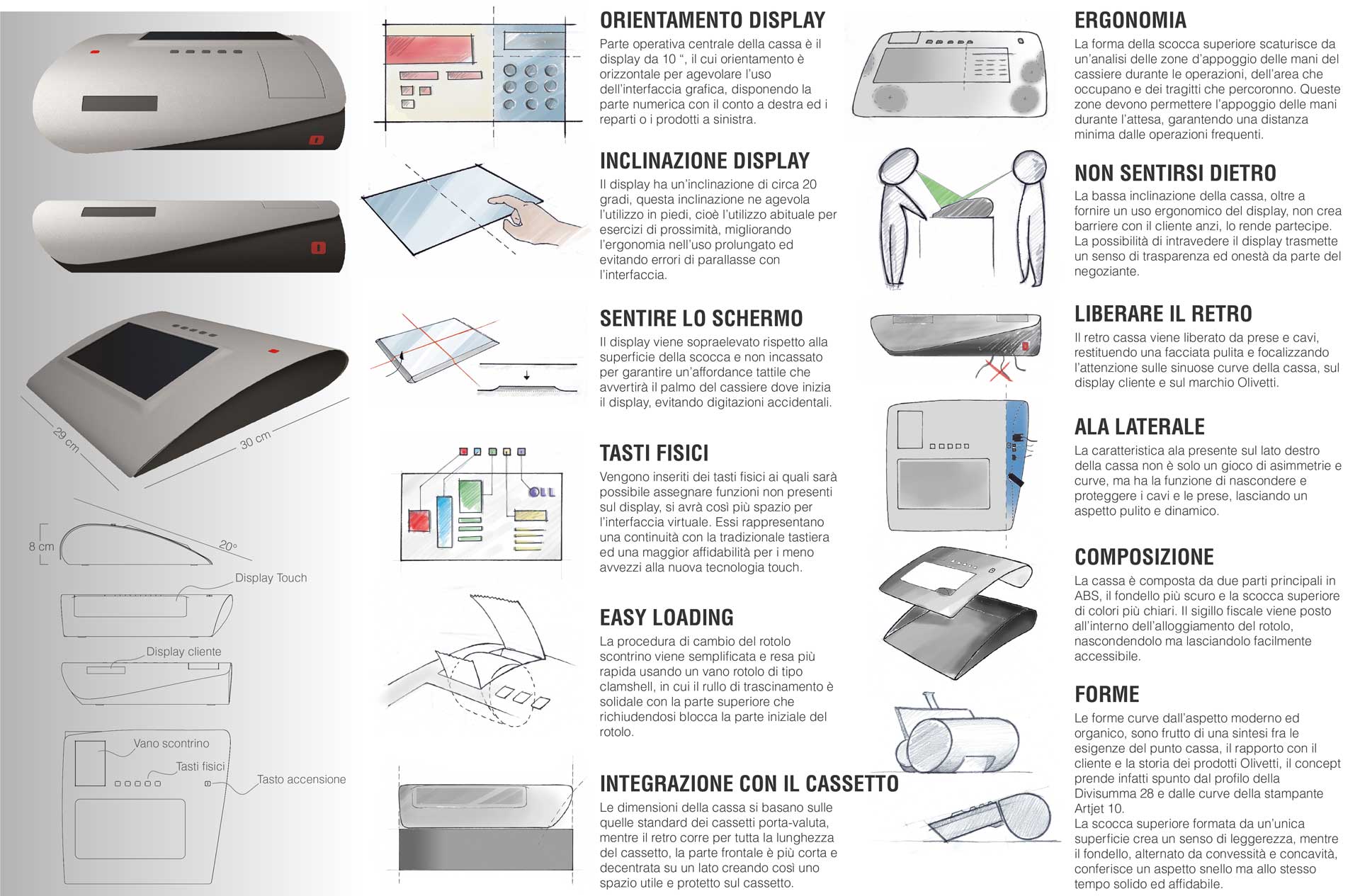
Olivetti Design Contest – Research board
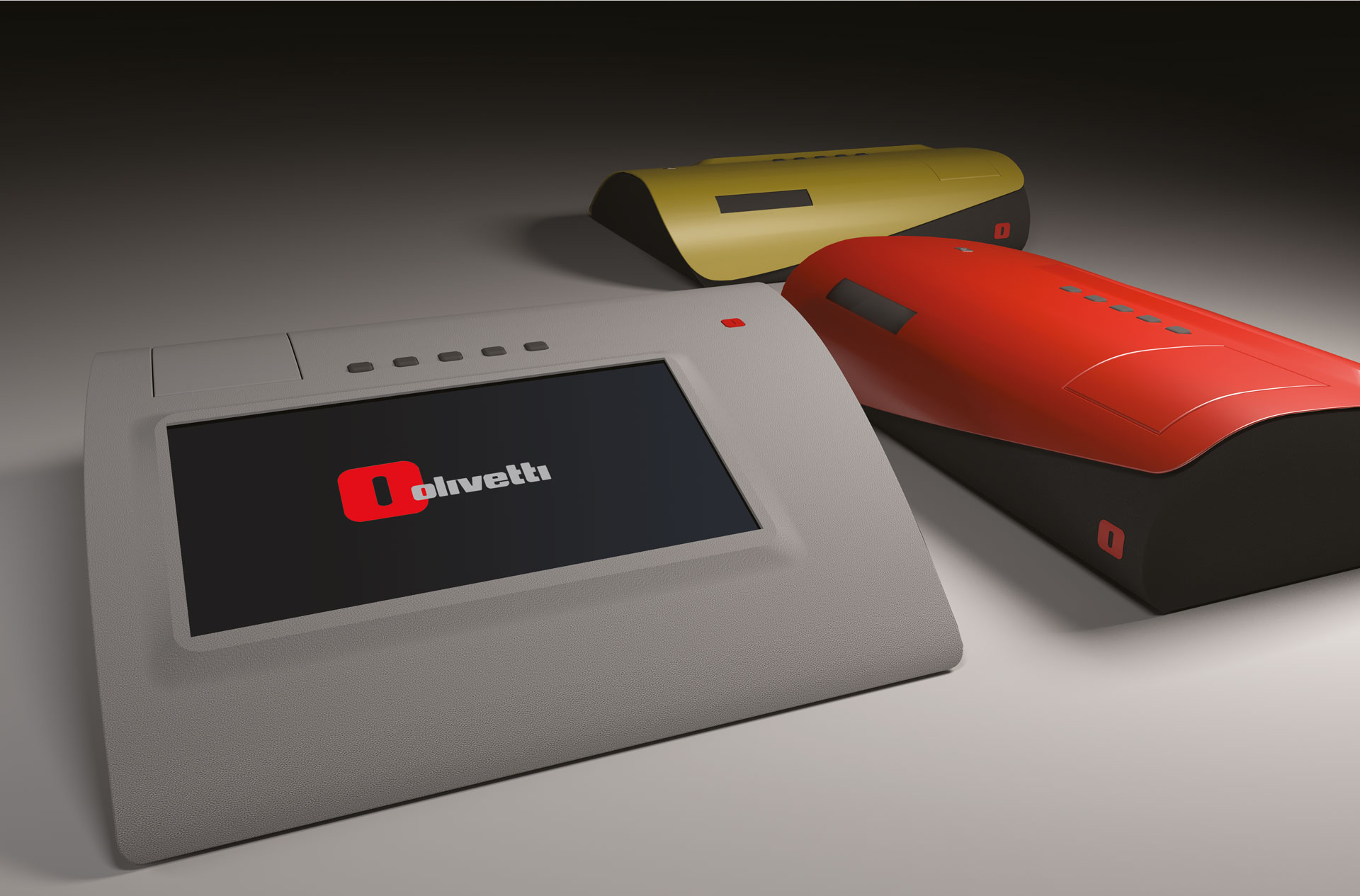
Olivetti Design Contest – Rendering
02.
The evolution of the concept
During the internship at the European research centre CETMA, together with Olivetti, I pushed the concept forward from a low-end to high-end cash register best suited for bigger retail and restaurants, designing not just the outer shape but also the mechanics of the shells and their joints for the industrial production.
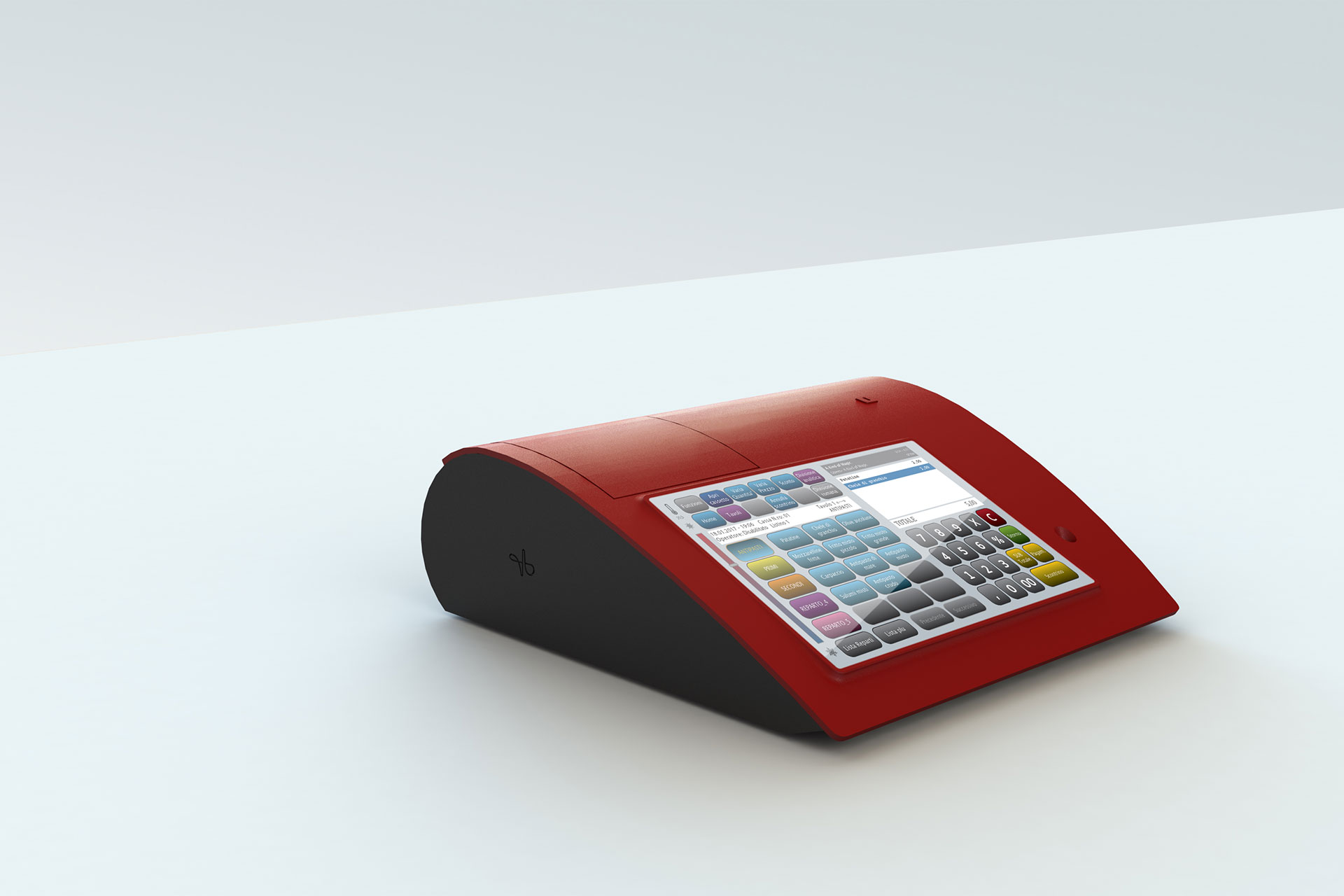
Olivetti Smart Cash Register front
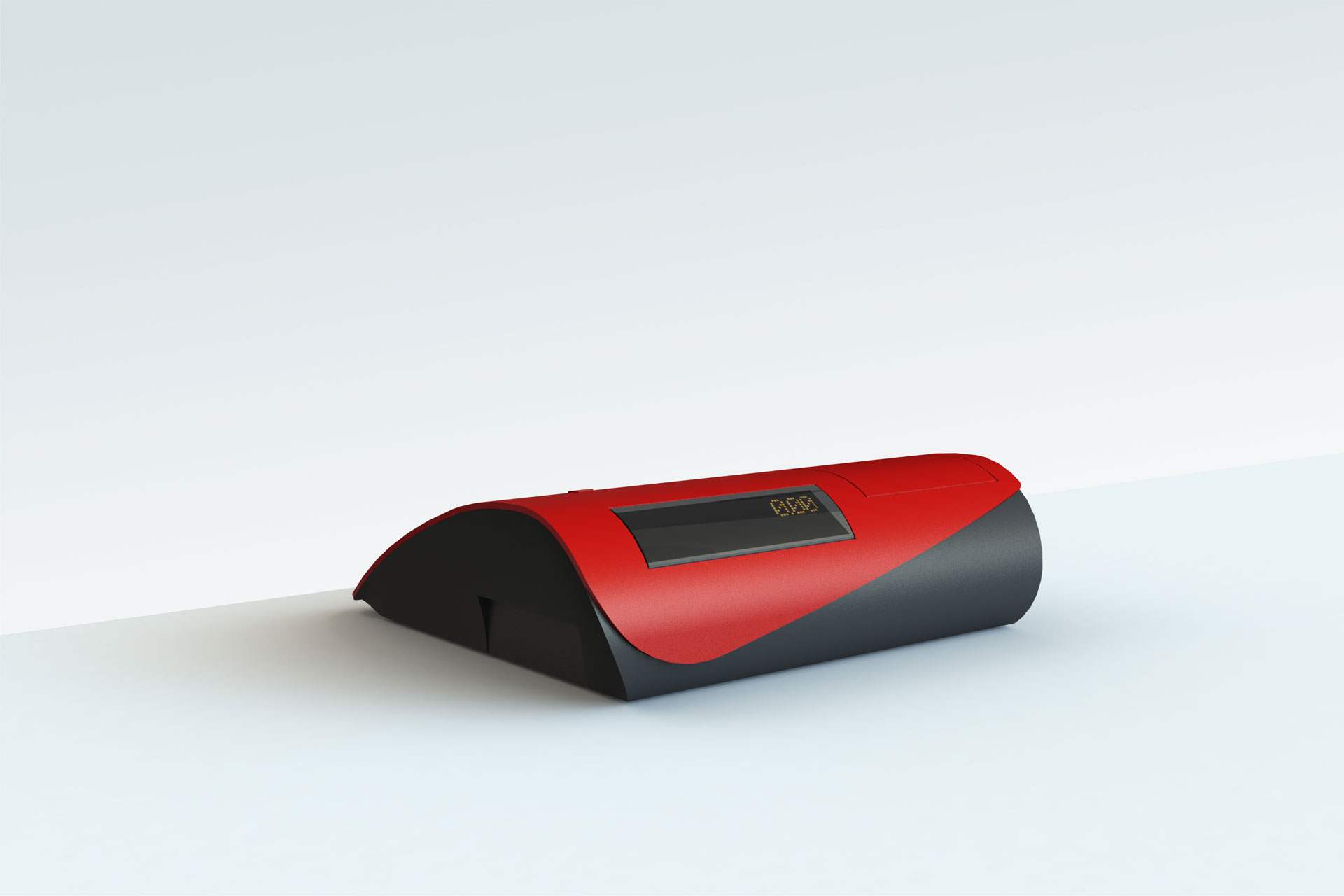
Olivetti Smart Cash Register back
03.
THE FINAL CONCEPT
As last step, the concept continued his development into my final thesis approaching it from an interaction design point of view. I spent few months talking with owners of stores and restaurants and what I found was the need of managing the ambience of the store from its main spot, the cash register. Especially in restaurants the owner spend his time behind the cash register but a lot of things need his attention, as for example the perfect temperature of the air conditioner or the volume of the music, or light intensity in dimmable lights.
The solution designed for this need took advantage of the diffusion of smart objects, thinking this objects into the retail scenario beeing controlled from the cash register. Because of the cash operator being constantly busy with the cash operations itself the solution adopted is through gesture controls using an emerging technology from Google, the project Soli, that would allow the cash operator to use one hand to operate the display while the other hand can control the home utomation of the store using specific hand gestures.
The proposition included also a design of the home automation visual feedback on the display using the existing visual style adopted by Olivetti.
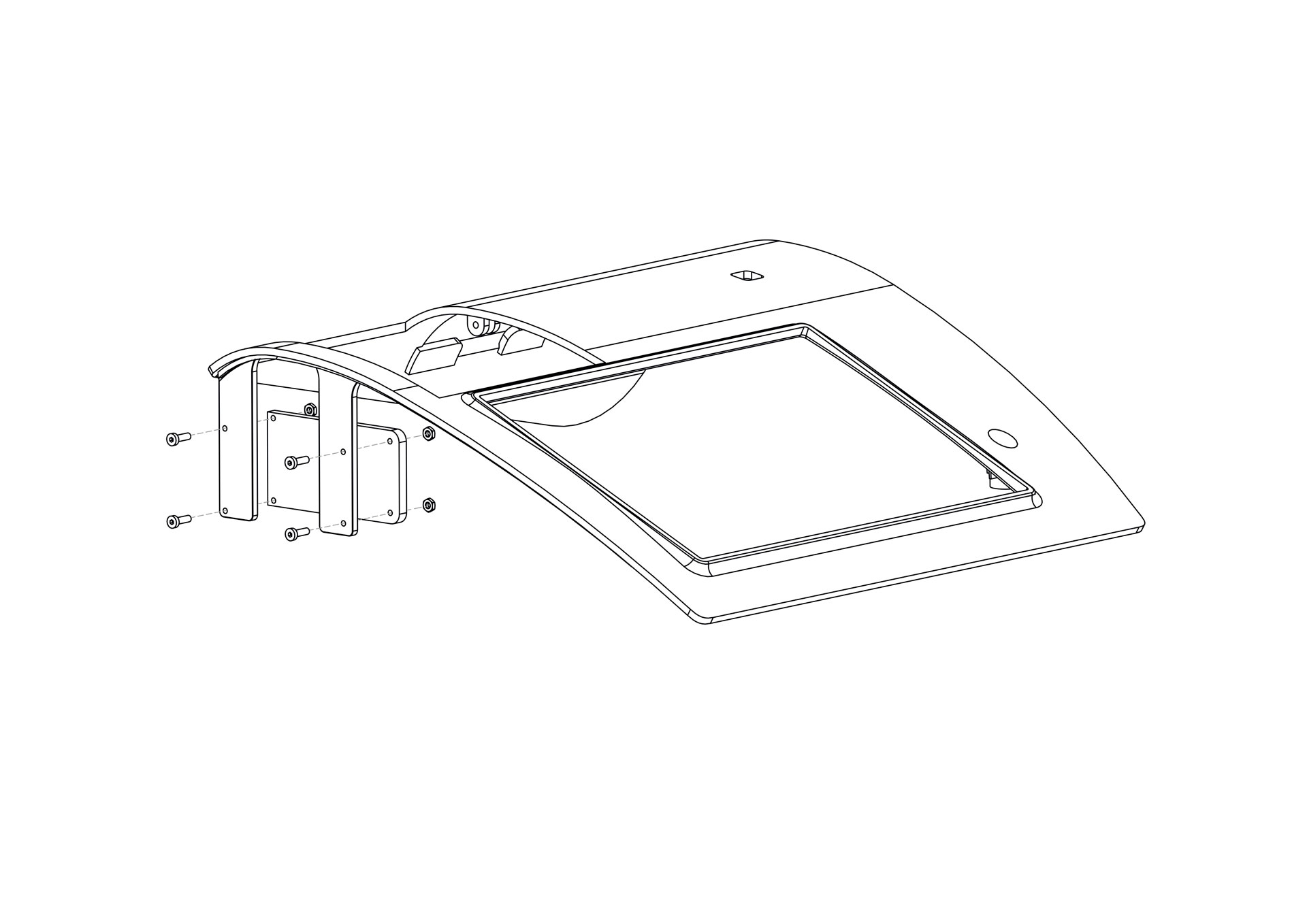
Olivetti Smart Cash Register – Google Soli exploded view
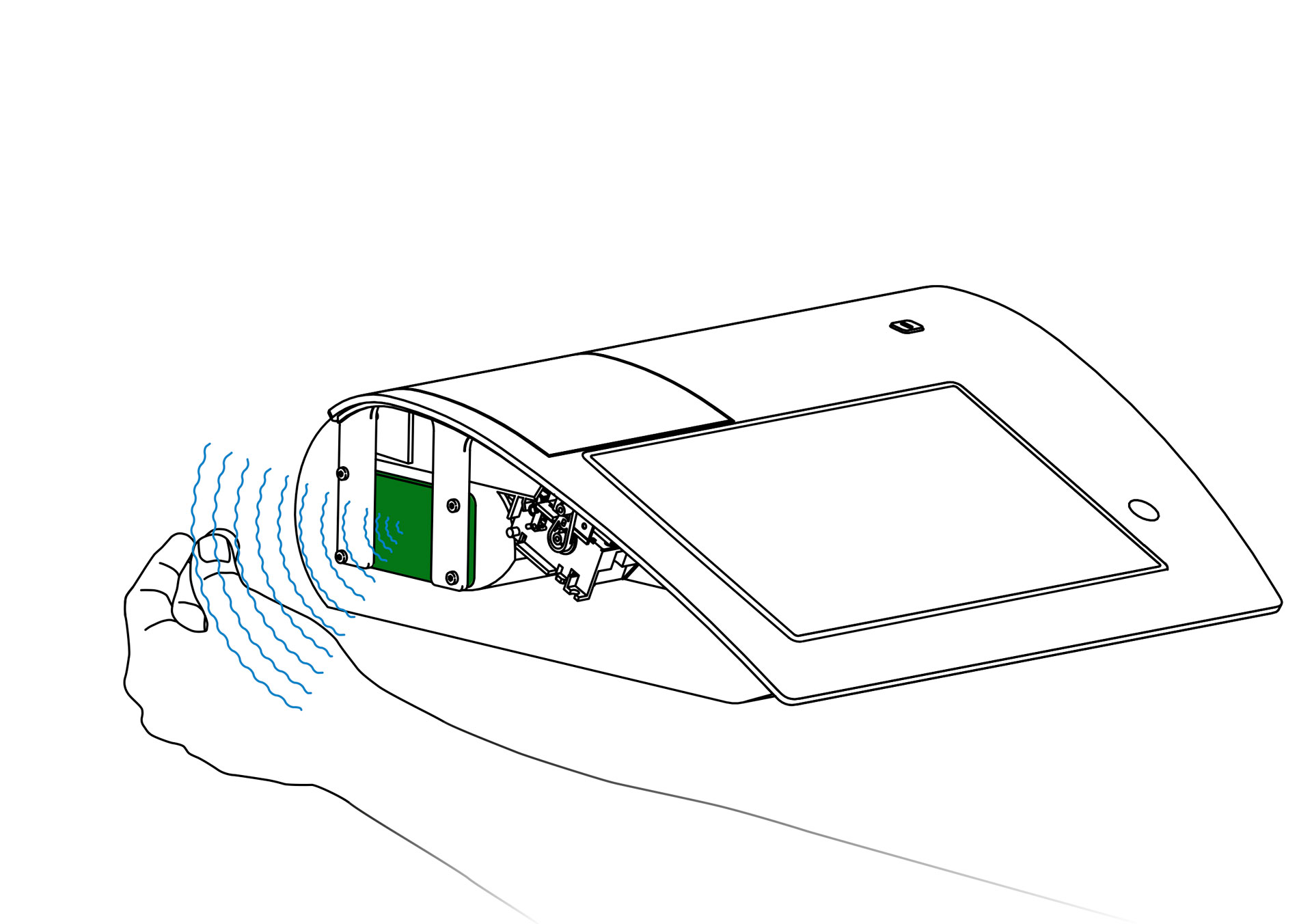
Olivetti Smart Cash Register – Google Soli x-ray view
